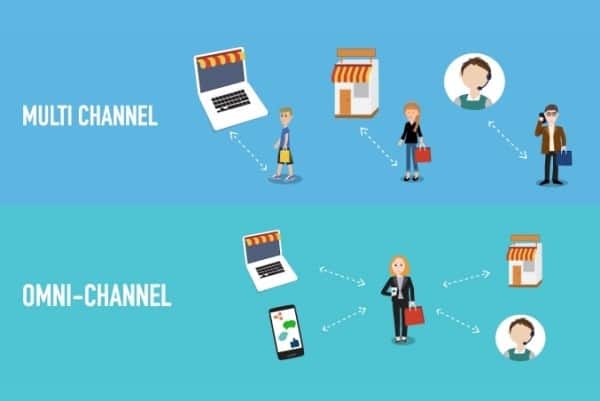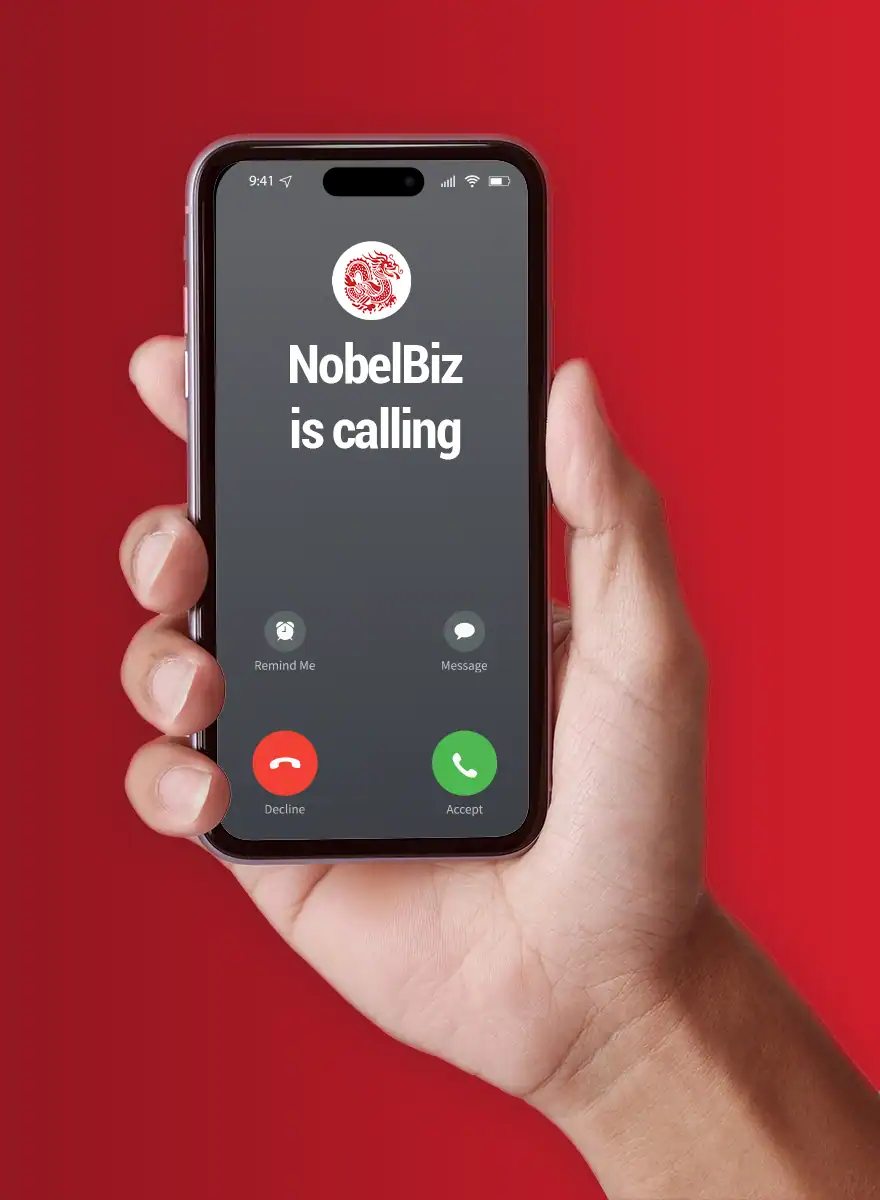Perhaps the difference between omnichannel and multichannel is best described simply like this:
Multichannel means multiple channels of communication. Omnichannel means an integrated approach between multiple channels of communication.
The Spread of the Multichannel and Omnichannel Approaches
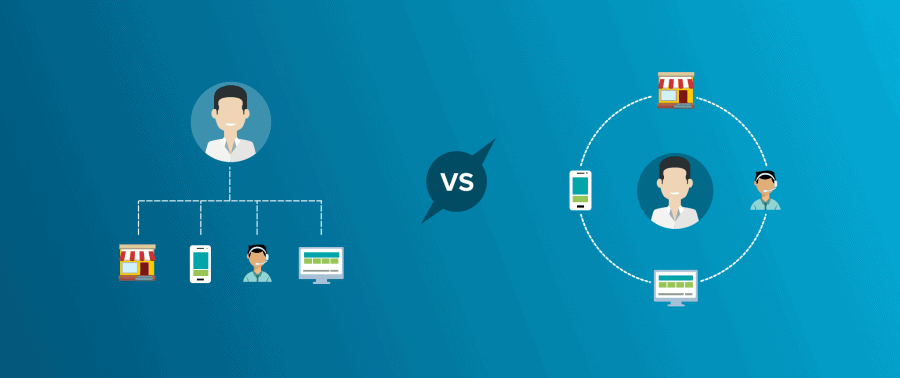
The key difference is in customer experience, based on how a brand can interact with a customer through its representatives, its products, and the decisions made anywhere along the way from having a product to making a sale.
Now, for decades, or ever since the earliest forms of marketing, businesses have been multichannel – whether conscious or not. When traditional stores started having an online presence, even if that presence was not necessary to sell, but rather for brand awareness, it still counted as a channel of communication. So, it was a multichannel approach to doing business – however rudimentary.
With the appearance of omnichannel, leaders across the business spectrum have tuned into the advantages omnichannel presents to their companies.
On a basic level like the example above, omnichannel means integrating the brick-and-mortar presence with the online presence. That can be done through different tactics, for example:
- Promoting store offers on your online channels in an integrated way
- Launching an online store that communicates and syncs with the physical store
These tactics are everchanging but the key concept behind the omnichannel approach is to have all the ways you do business be interconnected and intelligently so (now even more so with the implementation of more advanced technology and A.I. solutions).
What Is Multichannel For Call Centers?
For Call Centers, Multichannel means the ability to use multiple channels. Say your business has Facebook, Twitter, WhatsApp, Telegram, a website, physical stores, and any other channels. Multichannel means being able to use two or more of these at the same time for your messaging but in a disconnected or only partially-integrated approach.
However, multichannel can translate to many things depending on the industry.
- In our industry, contact centers, it means agents can talk to people on Facebook Messenger, Twitter, WhatsApp, Telegram, webchat, and all the other communication channels they have in their business.
- In marketing, multichannel means outreach to target audiences through all these different channels and more.
- In retail, it simply means being able to sell through multiple channels or have a brand presence on multiple channels.
There are as many cases as there are industries, so you can apply this basic model to any business:
- Does your business have multiple channels of communication with consumers?
- If yes, your business uses a multichannel tactic.
- If not, then what are you doing? It’s a new decade – you should at least have multichannel.
Here’s an illustration of what multichannel typically represents:
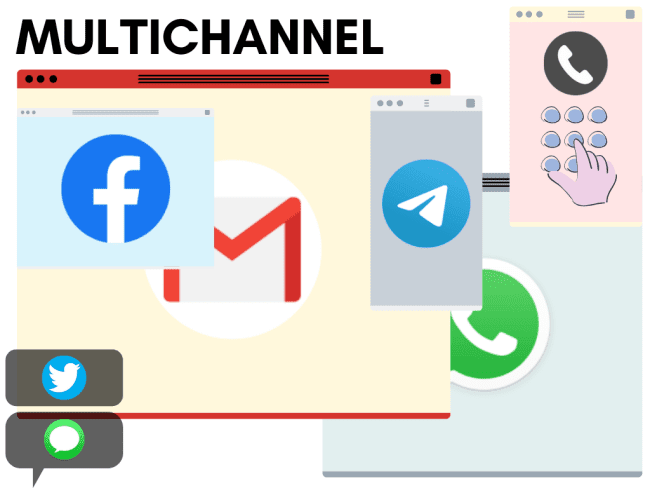
Feelings associated with multichannel: anxiety, stress, general dissatisfaction with the poor efficiency of the tactic
What Is Omnichannel for Contact Centers?
For Contact Centers, Omnichannel means you’re being smart when you’re using all the channels you have at your disposal. So you have Facebook, you have Twitter, you have a phone, you have a store, you have all the other channels. But you’re not just going to use them.
You’re going to create a strategy and link the individual processes together, and make sure you have the software necessary to carry the omnichannel approach in a single, intuitive platform if that’s possible within your industry.
And with that strategy, you’re going to be able to map customer journeys in a culture-forward way across these platforms. This effort further informs your business processes and affects the tactics inherently.
Of course, the definition of omnichannel also differs depending on your business.
- In our industry (contact centers) it means providing a single omnichannel contact center solution, in our case OMNI+, where agents can engage with all the channels without having to switch tools, maintain separate reports, separate rulesets, or separate client databases.
- In marketing, omnichannel means creating a tactic that sets clear roles for all channels and defines ways in which they integrate so that the user experience is the best possible.
- In retail, omnichannel means online and real-world stores communicate and integrate their processes with a consumer-forward approach. It also implies the use of all the different social channels they have in this approach and providing support to customers through them.
The basic model for omnichannel is the following:
- Does your business have multiple channels of communication that intelligently integrate?
- If yes, your business uses an omnichannel tactic.
- If no, then why? The business community agrees it’s the way to go moving forward!
Here’s an illustration of what omnichannel typically represents:
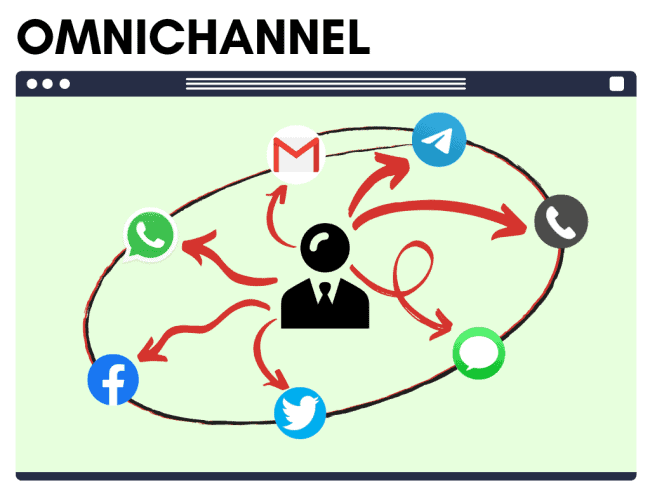
Feelings associated with omnichannel: satisfaction, peace of mind, control, order, and efficiency
The omnichannel strategy is based on continuity and centricity. Businesses want their clients to feel as though they are still speaking with the same brand, regardless of how they communicate with the business. To accomplish this, a holistic approach to customer service and experiences, as well as a central repository of customer data, are needed. In this aspect, AI is playing an important role in omnichannel technology.
The aim of AI in call centers is to streamline the process for both consumers and call center agents. Many people believe that the aim of AI is to eliminate the role of agents. This is not true.
With AI and machine learning, automated systems that were formerly clunky, restrictive, and often annoying to consumers have become even more useful.
Let’s Recap: the Difference Between Omnichannel vs Multichannel For the Contact Center Industry
The principal way omnichannel and multichannel are different in the contact center industry, is in integration. Multichannel means doing all the communication channels separately, omnichannel means doing them together, in a single tactic and with a conscientious approach.
However, that translates from business to business and industry to industry. It may vary wildly, but the concept stays the same.
And right now, the trend is pushing for the adoption of omnichannel solutions throughout the world. Anticipation and preparedness are key because you never know how the lack of an omnichannel solution might impact your business.
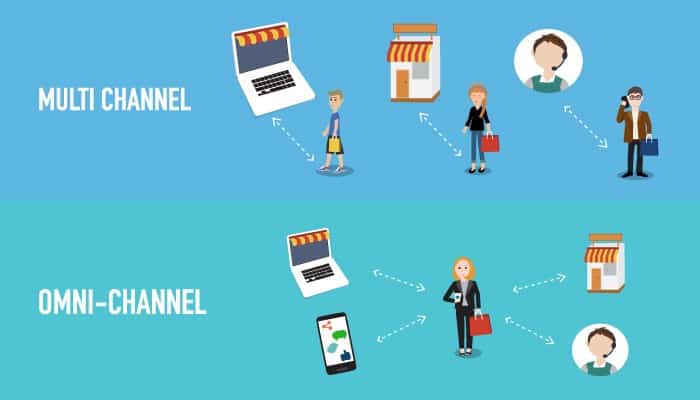
There are many advantages to running omnichannel vs multichannel in 2020.
- You can create an integrated approach to the way you do things
- You can map customer journeys
- You can juggle your tactics so that everything you do goes out at the right time, on the right channel
- You can control everything at all times
If you manage inbound campaigns, an omnichannel solution allows you to:
- Qualify and prioritize clients’ demands according to choices made in the IVR
- Automate certain responses with Selfcare options
- Direct your clients to the most appropriate agent to deal with their demands
- Collect all data in a single platform
- Share information regardless of the type of communication channel
- Enrich the call frame with custom call scripts
And if you manage outbound campaigns:
- Set up the dialing system that suits you best ( Preview, Progressive, or Predictive )
- Exceptional and rich customer knowledge through CRM integration
- Automate all your campaigns (phoning, emails, or SMS).
- Click-to-dial
- Setting up reminder rules and post-call workflows
The Bottom Line
The bottom line is without omnichannel solutions, you don’t even know how much you don’t know. Because the omnichannel solution itself is built to give you data about your consumers that nothing else can provide.
So yes, you should make the switch to omnichannel before it affects your company even more than it already has without you even being able to measure the negative impacts.
Update for 2021: The growth of Cloud solutions is undeniable.
The setting of the COVID-19-related health issue has provided cloud-based solutions an unprecedented boost. Businesses, in fact, have had to change fast in order to stay in business. This has a direct impact on the shift to SaaS solutions, particularly team messaging and corporate telephony.
Furthermore, Gartner predicts that end-user expenditure on public cloud services will reach $396 billion in 2021 and will rise 21.7% to $482 billion in 2022. Furthermore, Gartner estimates that by 2026, public cloud investment would surpass 45%of total business IT spending, up from less than 17% in 2021.
Last Updated on February 27, 2025

Andrei is an experienced marketing professional specializing in propelling growth for both B2B and B2C companies. Proficient in streamlining marketing operations and enhancing lead and customer experiences through SEO and marketing techniques.


